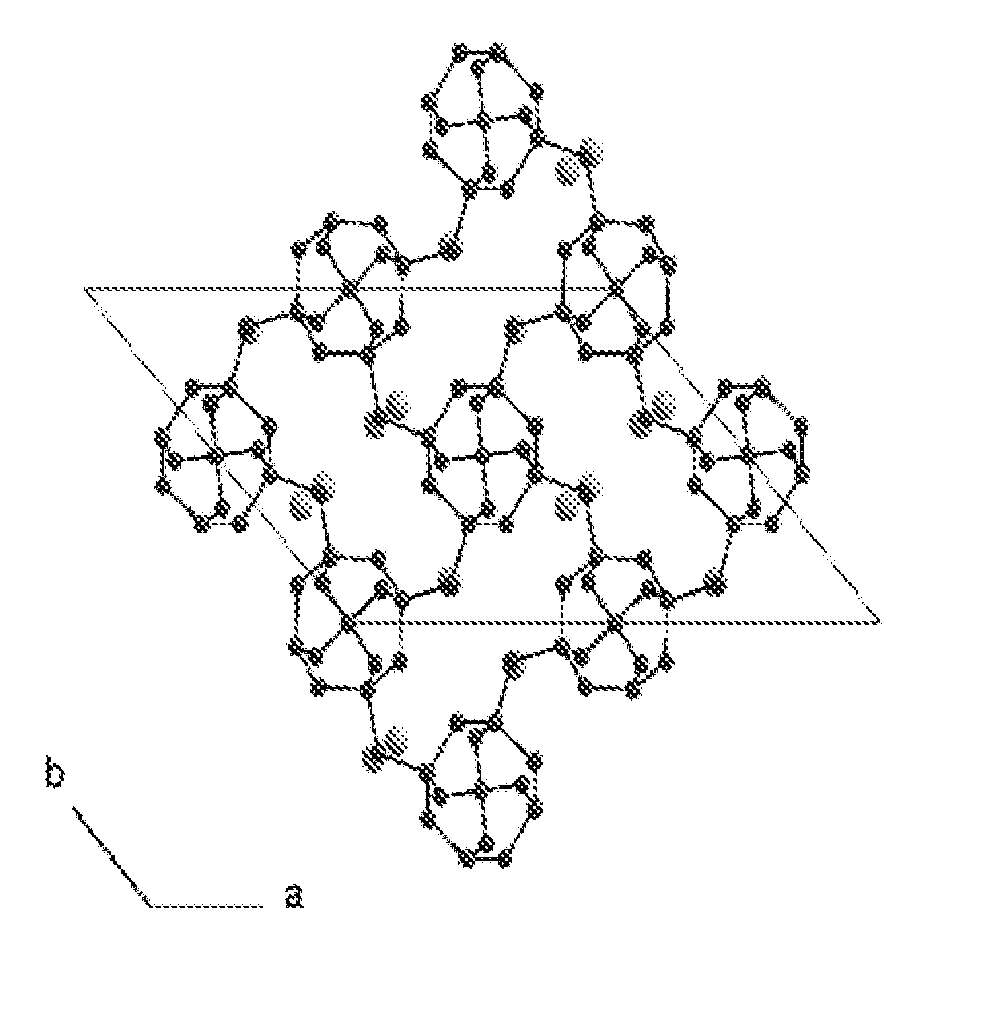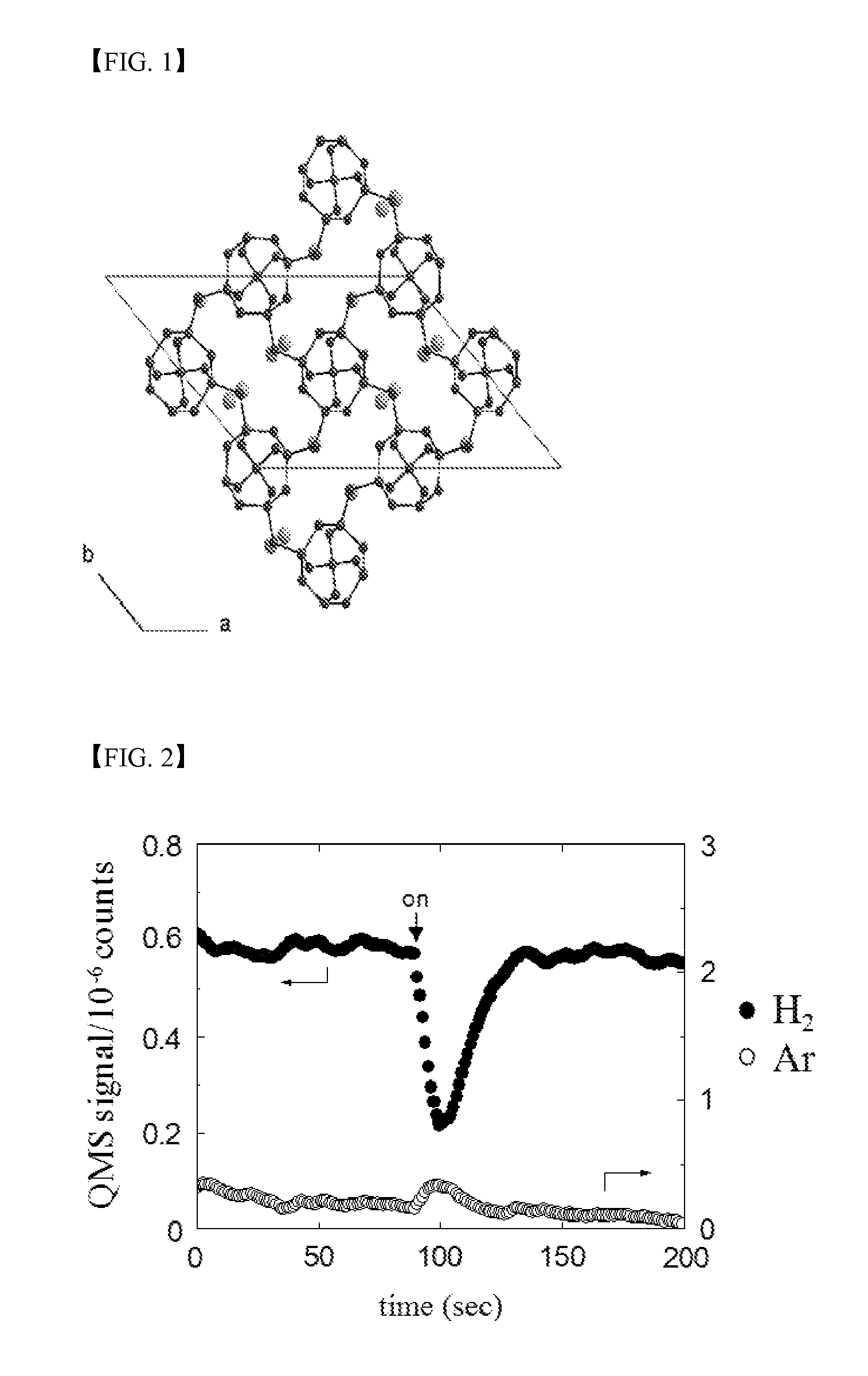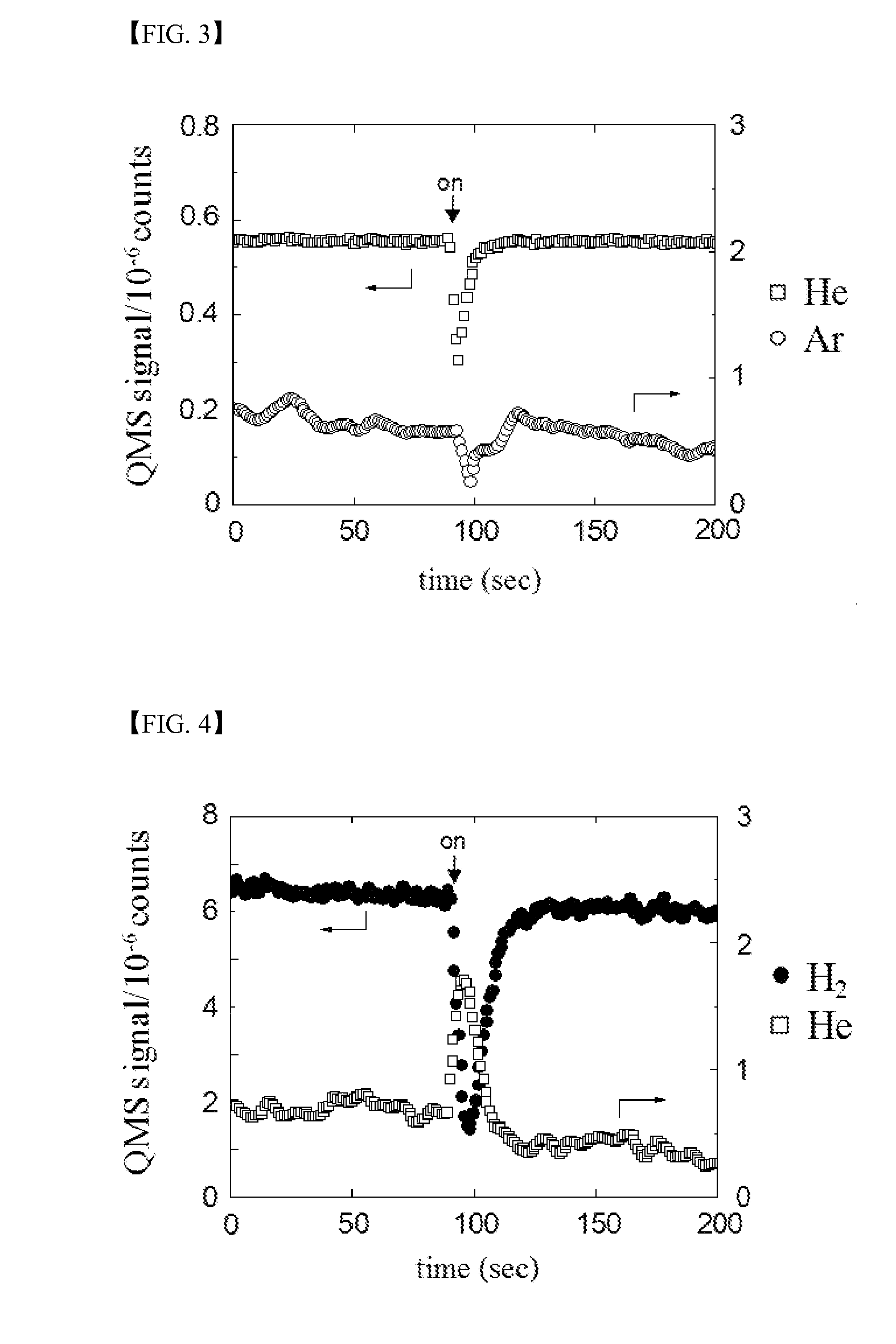Method for selectively isolating hydrogen or helium using a natrolite-based zeolite, and novel natrolite-based zeolite
a technology of natrolite-based zeolite and selective separation, which is applied in the direction of crystalline aluminosilicate zeolites, separation processes, silicon compounds, etc., can solve the problems of increasing the number of treatment processes and apparatuses, difficult to use systems in practice, and the cost-effectiveness of the electrolysis method (1)
- Summary
- Abstract
- Description
- Claims
- Application Information
AI Technical Summary
Benefits of technology
Problems solved by technology
Method used
Image
Examples
example 2
Preparation of PST-1 zeolite
[0055]In a plastic beaker, 22.2 g of 45 wt % potassium hydroxide (KOH) aqueous solution was added to 6.21 g of water and stirred for 5 minutes, and then 4.17 g of gallium oxide (Ga2O3) was added thereto, and the mixture was heated at 100° C. for 12 hours. The obtained transparent solution was cooled slowly to room temperature, and 16.7 g of colloidal silica sol (Ludox AS-40) was added slowly thereto, and then the mixture was stirred for 24 hours, thereby obtaining a reaction mixture having the composition shown in the following formula (6). Then, the obtained reaction mixture was transferred into a Teflon reactor which was then placed in a stainless steel container in which the reaction mixture was then heated at 150° C. for 1 day while it was rotated at 60 revolutions per minute. Then, the obtained solid product was washed repeatedly with water and dried at room temperature.
8.0 K2O:2.0 Ga2O3:10.0 SiO2:150 H2O (6)
example 3
Preparation of PST-1 zeolite
[0058]In a plastic beaker, 36.27 g of 45 wt % potassium hydroxide (KOH) aqueous solution was added to 10.16 g of water and stirred for 5 minutes, and then 6.82 g of gallium oxide (Ga2O3) was added thereto, and the mixture was heated at 100° C. for 12 hours. The obtained transparent solution was cooled to room temperature, and 27.3 g of colloidal silica sol (Ludox AS-40) was added slowly thereto, and then the mixture was stirred for 24 hours, thereby obtaining a reaction mixture having the composition shown in the following formula (8). Then, the obtained reaction mixture was transferred into a Teflon reactor which was then placed in a stainless steel container in which the reaction mixture was then heated at 150° C. for 1 day. Then, the obtained solid product was washed repeatedly with water and dried at room temperature.
8.0 K2O:2.0 Ga2O3:10.0 SiO2:150 H2O (8)
example 4
Preparation of TNU-3 zeolite
[0059]In a plastic beaker, 38.40 g of 50 wt % sodium hydroxide (NaOH) aqueous solution was added to 48.48 g of water and stirred for 5 minutes, and then 7.50 g of gallium oxide (Ga2O3) was added thereto, and the mixture was heated at 100° C. for 12 hours. The obtained transparent solution was cooled to room temperature, and 60.00 g of colloidal silica sol (Ludox AS-40) was added slowly thereto, and then the mixture was stirred for 24 hours, thereby obtaining a reaction mixture having the composition shown in the following formula (9). Then, the obtained reaction mixture was transferred into a Teflon reactor which was then placed in a stainless steel container in which the reaction mixture was then heated at 100° C. for 3 days. Then, the obtained solid product was washed repeatedly with water and dried at room temperature.
6.0 Na2O:1.0 Ga2O3:10.0 SiO2:150 H2O (9)
PUM
| Property | Measurement | Unit |
|---|---|---|
| temperature | aaaaa | aaaaa |
| temperature | aaaaa | aaaaa |
| temperature | aaaaa | aaaaa |
Abstract
Description
Claims
Application Information
 Login to View More
Login to View More - R&D
- Intellectual Property
- Life Sciences
- Materials
- Tech Scout
- Unparalleled Data Quality
- Higher Quality Content
- 60% Fewer Hallucinations
Browse by: Latest US Patents, China's latest patents, Technical Efficacy Thesaurus, Application Domain, Technology Topic, Popular Technical Reports.
© 2025 PatSnap. All rights reserved.Legal|Privacy policy|Modern Slavery Act Transparency Statement|Sitemap|About US| Contact US: help@patsnap.com



